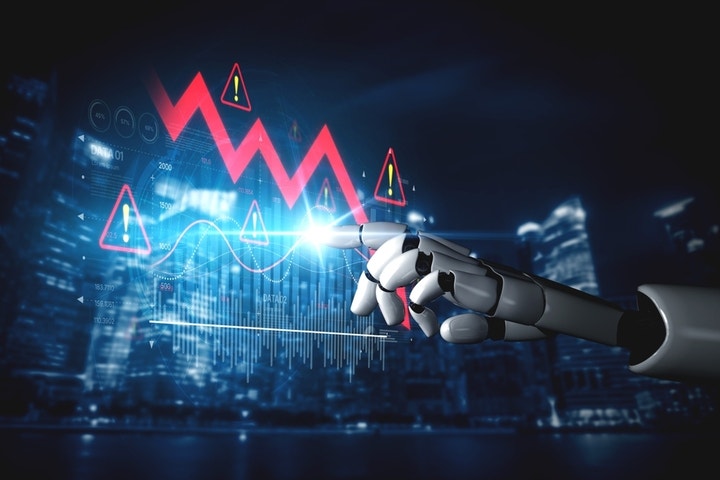
Silicon Valley is investing heavily in artificial intelligence like never before. The Magnificent Seven—Apple(NASDAQ:AAPL), Microsoft(NASDAQ:MSFT), Alphabet (NASDAQ:GOOG), Amazon (NASDAQ:AMZN), Meta (NASDAQ:META), Nvidia (NASDAQ:NVDA), and Tesla (NASDAQ:TSLA)—are expected to spend close to $400 billion this year on AI infrastructure.
That's roughly half of U.S. GDP growth in 2025, according to the latest insight from Sparkline Capital.
The idea is simple – build enough computing power, and the profits will follow. Still, history shows that big bets on transformative tech typically create more volatility than value. At least at first.
The real question, tho, isn't whether AI will change the world. It's how much collateral damage we'll accept along the way.
The AI Prisoner's Dilemma
What's happening among Big Tech today looks a lot like a game-theory problem. Each company wants to keep its AI investments "rational," but none can afford to slow down.
Meta's Mark Zuckerberg admits the firm might "misspend a couple of hundred billion dollars," yet fears losing the race even more. Meanwhile, Alphabet's co-founder Larry Page once said he'd rather "go bankrupt than lose."
The optimal move would be cooperation—moderate spending, shared standards, maybe even a truce. But in practice, competition drives every player to overspend. Sparkline's analysis shows that corporate capital intensity across tech now mirrors that of utilities, a sector not exactly known for explosive returns.
The same companies that once thrived as asset-light—scaling software instead of hardware—are becoming builders of massive, depreciating infrastructure. The irony? In their attempt to automate everything, they've recreated the economics of a steel mill.
Finding the Equilibrium
In the 1800s, railroads transformed America but bankrupted dozens of their investors. A century later, telecom firms laid 80 million miles of fiber-optic cable during the dot-com boom—most of which went dark after the crash.
The pattern is almost textbook. A technological breakthrough sparks enthusiasm, investment floods in, demand lags behind supply, valuations bubble, and then collapse.
Quietly, the infrastructure from the frenzy powers the next wave of growth.
"The builders rarely capture most of the value—they subsidize it for everyone else," Sparkline's Kai Wu notes. Netflix, Facebook, and Amazon owe their early rise to cheap bandwidth left behind by bankrupt telecoms.
That's why some economists, such as Stanford's Professor Erik Brynjolfsson, argue that the AI payoff will take time.
Like electricity or the internet, AI's productivity gains depend on "complementary investments"—new processes, retraining, even cultural shifts. These are slow, messy, and human. But once they click, the returns can be exponential.
The Good, the Bad, and the Ugly
The Financial Times summarized the debate between economists and technologists as a tug-of-war between realism and faith.
In the "good" scenario, AI ends scarcity. The Dallas Fed's Mark Wynne and Lillian Derr modeled this utopian version. Superintelligent systems generate infinite knowledge, productivity soars, and GDP per capita explodes.
But there's a "bad" path too. The AI arms race could fuel reckless spending, inflate valuations, and hollow out returns. Sparkline's data show firms ramping up capital expenditures tend to underperform peers by 8 percent a year.
If the $5 trillion AI buildout fails to generate proportionate revenue (Bain estimates it would take $2 trillion annually by 2030 to justify today's pace), then this could end like the telecom crash: a glut of compute capacity and collapsing margins.
And then there's the "ugly" case—the one Wynne and Derr half-jokingly modeled. AI reaches singularity, and GDP drops to zero because there are no humans left to measure it. Economists rarely quantify extinction risk, but in 202,5 it's on the slides of central bankers.
Still, the middle ground may be where reality lands. AI is likely to reshape economies like electricity—a gradual, uneven journey of creative destruction. The near-term chaos of overbuilding might be the price of long-term abundance.
Read Next: Elon Musk’s Trillion-Dollar Pay Package Approved By Tesla Shareholders Amid AI, Robotics Push







